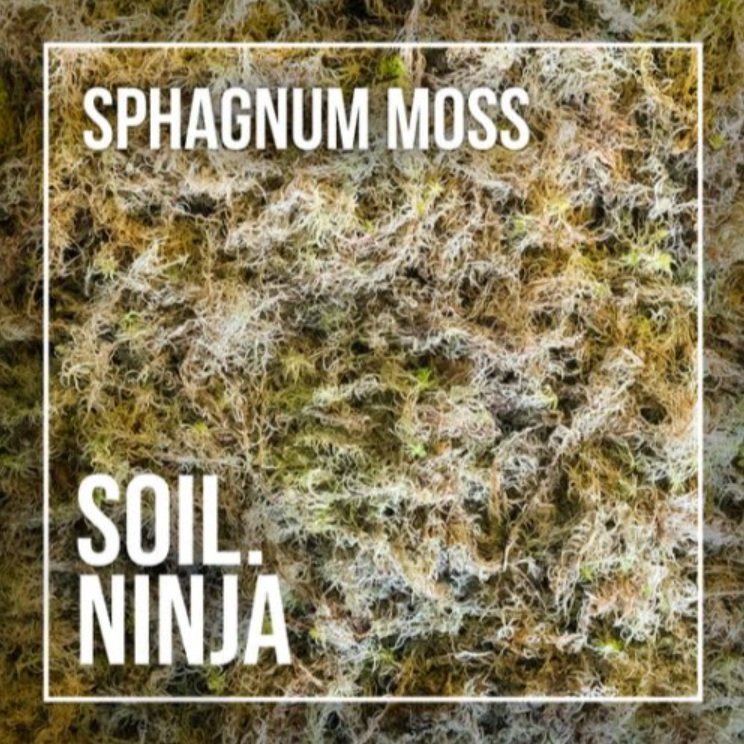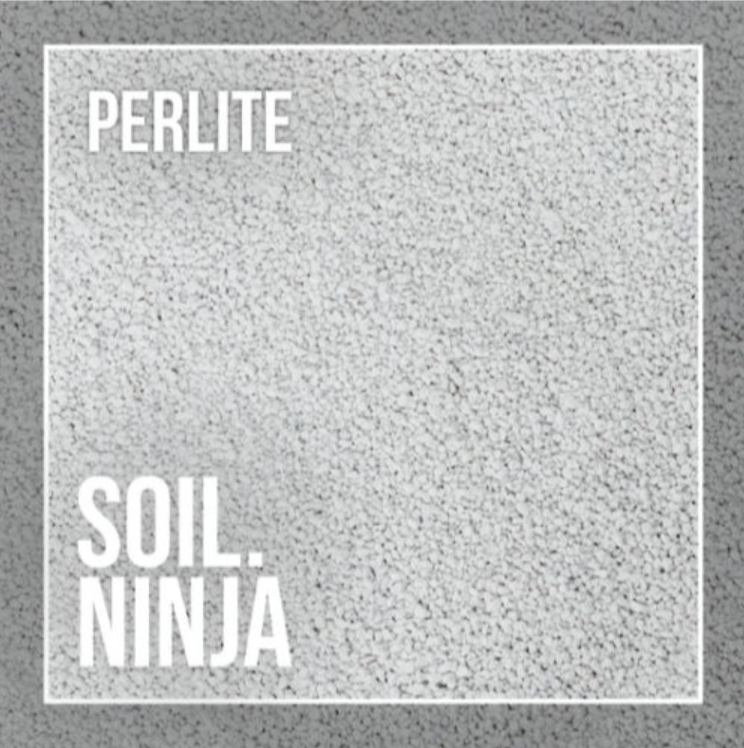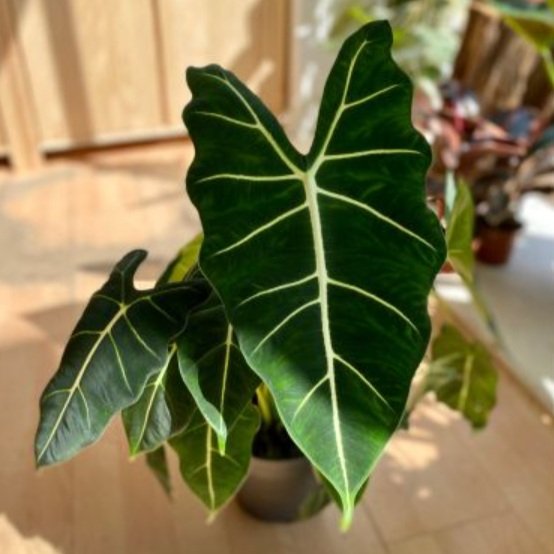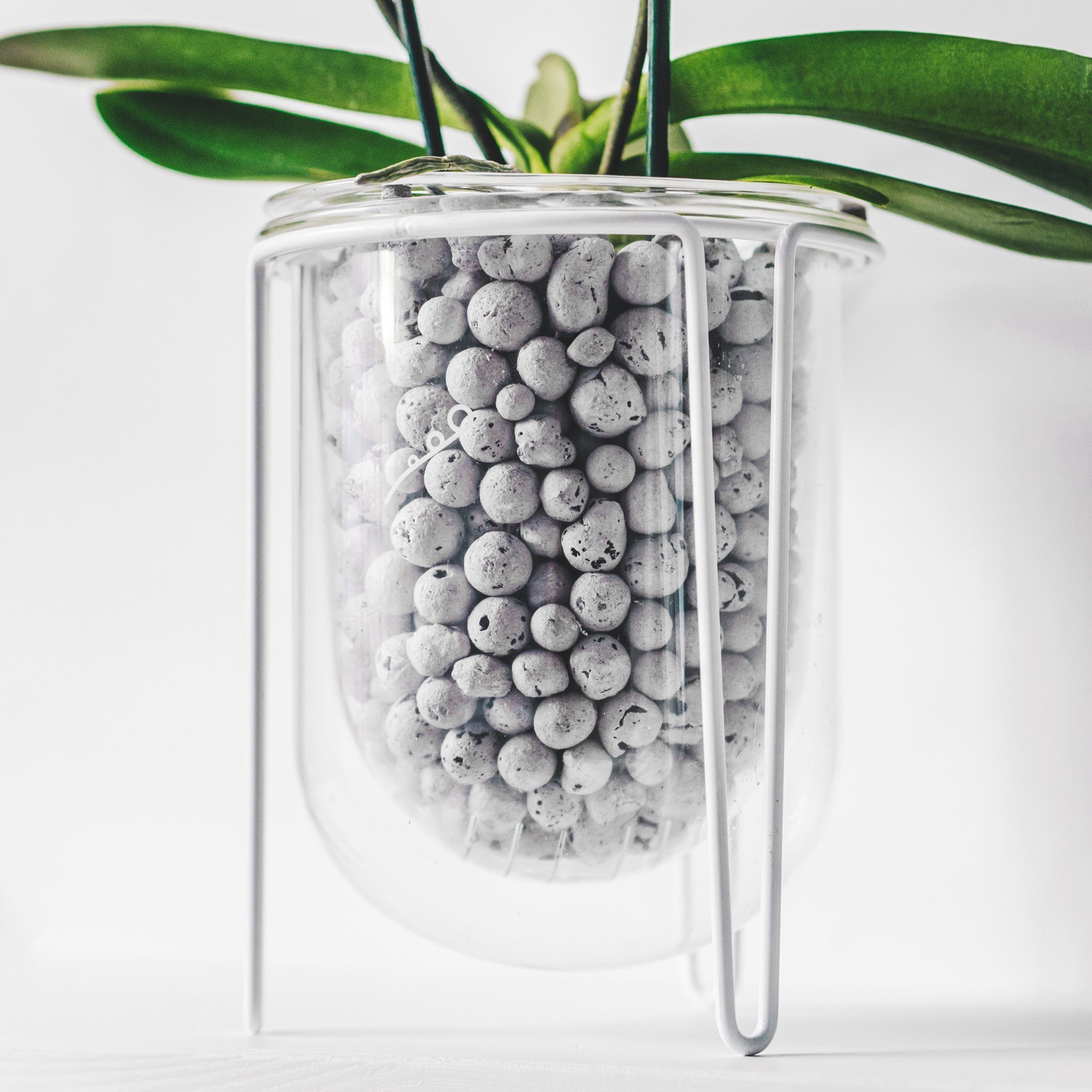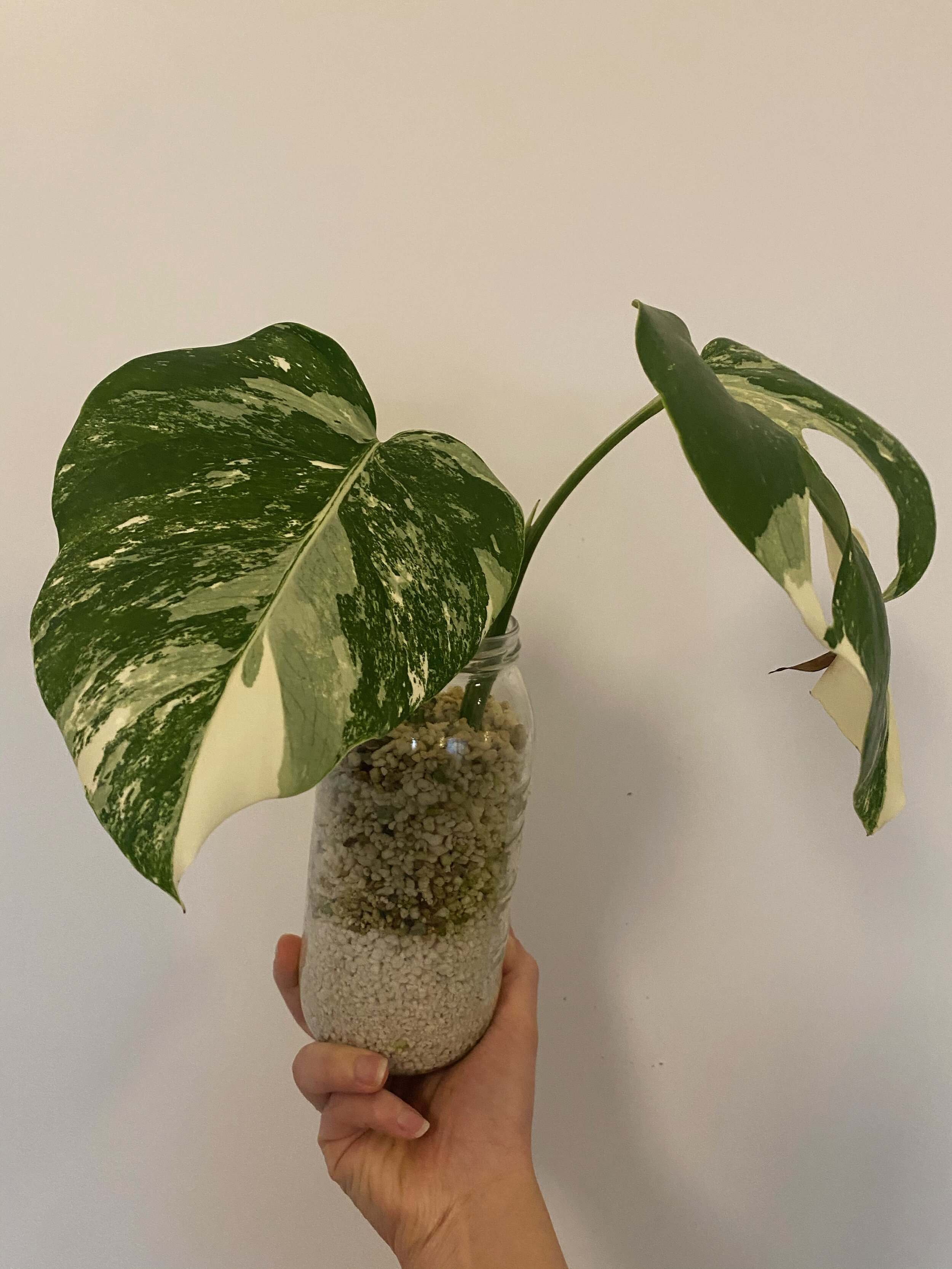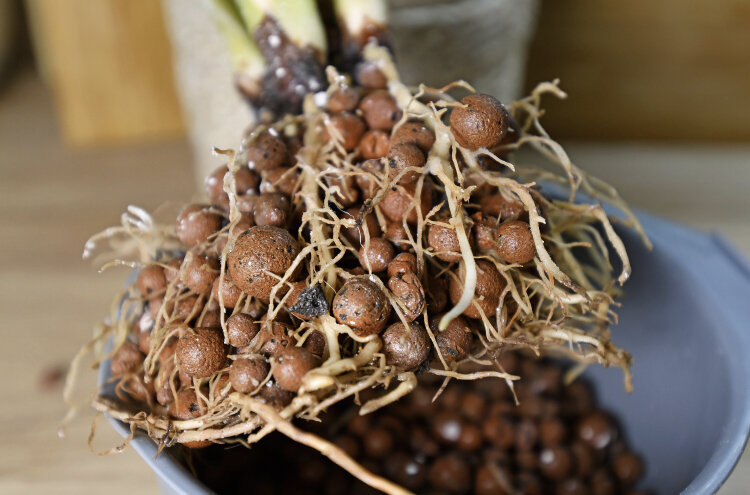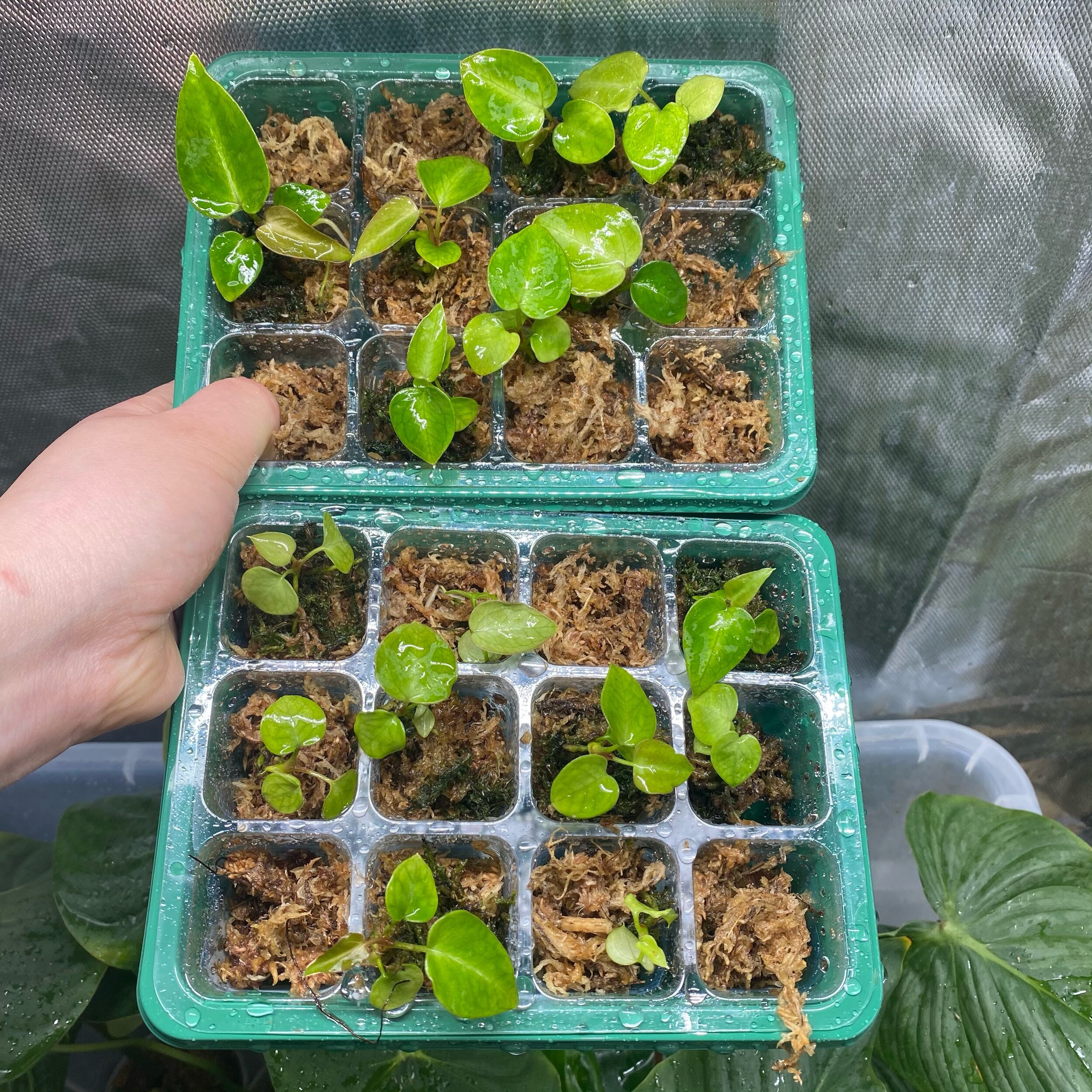With the rise of houseplant popularity there has been an increase in the number of people turning to soilless mediums to grow their prized plants to top instagram-able condition.
Read on for an introduction to semi-hydro growing; its terms and common techniques.
For tried and tested tips we caught up with Fair of Fairest plants to understand why she classes herself as a soilless convert and get a 101 on how to grow without the use of typical potting mixes.
Fair’s Monstera thai constellation and Monstera aurea. Image @fairestplants
Fair is a stem cell scientist and plant fanatic with an enviable collection of over 300 plants in her London flat, she sells cutting of her rare and unusual plants on @asian_aroids and has been using soilless mediums for two years.
Fair’s favourite plants to grow are Monsteras, Philodendrons, Anthuriums and Syngoniums. Some grown by windows, some in an IKEA MILSBO cabinet with the IKEA VAXER LED bar and some in a grow tent with Acadia Jungle Dawn LED grow bars. (See our grow light blog for recommendations by top plant fans).
Shop semi-hydro essentials
What is semi-hydro?
Semi-hydro is also known as passive-hydro, it refers to the act of growing plants in a soilless planting medium that is inorganic and inert, where the plant is self-watered via a water reservoir.
Semi-hydro potting mediums are highly porous. Commonly used mediums are LECA, Perlite and LECHUZA-PON. Water is drawn up through the potting medium due to its porous nature, this is known as ‘wicking’.
This differs from hydroponic growing that does not include the use of a growing medium, where the plants are suspended directly into a solution of water and nutrients, and pumps are used to provide the plant’s roots with necessary oxygen.
Anthuriam magnificum in semi-hydro. Planted in LECHUZA-PON in clear plastic pot with water reservoir. Image: @fairestplants
Why semi-hydro?
Like many, Fair started out planting in soil. Then, through propagating cuttings in water and realising they can continually grow in there she started experimenting with soilless mediums. That was two years ago and Fair has gone on to covert the vast majority of her plants to semi-hydro, for ease of maintenance and for the reduced risk of root rot.
Reduced maintenance
By using a water reservoir there is less frequent watering required, the plant takes up the water at the rate that it needs.
Reduced risk of root rot
By eliminating soil-born organic microbes and by allowing the plant to take up the amount of water it needs there is less risk of root rot. Soilless mediums don’t clump or become waterlogged like soil does when over-watered, providing more aeration for the plant which aids healthy root growth.
No more fungus gnats?
An added bonus, and one many people cite as the main reason for converting to semi-hydro is to rid the home of fungus gnats. Worth noting though that Fair has experienced fungus gnats when using Perlite.
Re-useable potting mediums
A great benefit of the soilless potting mediums is that they can be reused for a considerable amount of time. They just need to be washed and rinsed and can be reused.
Downsides to semi-hydro?
Accessibility of products
The soilless mediums can be slightly trickier to get hold of than regular compost; they are less widely available than purchasing compost from your average garden centre, supermarket or DIY store.
Environmental factors
Soilless potting mediums such as Perlite, LECA and LECHUZA-PON are mined from natural, non-renewable sources and then put through an intensive heating process in order to make them commercially viable, so there is much debate around the sustainability of these mediums. Additionally, Sphagnum moss is often used as a soilless growing medium and although there are renewable and responsible sources of Sphagnum, much is extracted from the vital peat bogs of its natural habitat which are in devastatingly fast decline. Peat bogs are a really important habitat for many flora and fauna and a hugely important carbon store. More on growing peat free here.
Semi-hydro set up: the reservoir method
Semi-hydro planting is achieved through keeping a reservoir of water (and nutrients) below the potting medium, the water is wicked up by the porous potting medium providing the plant’s roots with the water and nutrients it needs. There are a number of ways of setting up the reservoir method, explained below.
a) A pot, cup, glass or vase with no drainage holes.
The water reservoir is at the bottom of the container and the plant’s roots sit above the water level. Eventually the plant will grow roots that are adapted for water into the reservoir.
Image: @fairestplants
b) An inner pot and cache pot
An inner pot with drainage holes holds the plant and potting medium. This sits inside an outer cache pot that holds the reservoir of water.
The potting medium wicks up the water and nutrients. Some include a water level gauge so you can easily see when the reservoir needs topping up.
Image: Self watering insert Elho
c) Material wicking system
A self watering pot with a water reservoir and a cotton or cord wick that sits with one end in the water and the other end in the potting medium. The material wicks up the water into the potting medium. Some self-watering pots come with a water gauge.
Image: LECHUZA
Semi-hydro terms and definitions
In order to explain the nitty gritty of soilless growing we’ll clarify some commonly used terms and products.
Wicking
Wicking is the act of absorbing or drawing water via capillary action. For example, when water evaporates from a plant through its leaf surface, this pulls water up through the plant from the roots via capillary action. Additionally, water can be ‘wicked’ up through material (a cord or string) from a water reservoir into a potting medium.
Substrate
The material in which an organism lives and takes nutrients from. In growing, this refers to the potting medium.
Inorganic
Meaning not derived from living matter. Conversely, soil is an organic medium as it is made up in part of composed organic matter (from decayed plants and animal manure). Inorganic material is seen as beneficial for growing because it carries less risk of pest and disease.
Inert
In a chemical sense, inert means without the ability to react. In growing mediums this is beneficial as it doesn’t degenerate.
Reservoir method
As explained above, this is the method in which a reservoir of water is kept below the potting medium, the water is wicked up by the porous potting medium providing the plant’s roots with water and nutrients.
Shower method
The shower method is used when a plant is in soilless medium and all the water is drained out of the pot after watering, there is no water reservoir used. This method is commonly used when transitioning a plant into a semi-hydro situation; to gradually get the plant’s roots ready for a water reservoir.
Many soilless fans in fact never use a reservoir, they continue with the shower method, watering as if the plant were in soil, letting it dry out to some extent before watering again. A long-term shower method can be beneficial for plants who like a drier situation such as cacti and succulents.
Flushing
A thorough rinse of the plant’s roots and substrate to wash away mineral and impurity build up. Carried out periodically to maintain healthy plant growth. Many people also recommend giving your substrate a thorough wash prior to planting to remove impurities, particularly useful to carry out when using LECA.
Dry phase
Allowing a period of dryness where no water is added. This process is advised by LECUZA when using their substrates and is also often used for plants that like a drier substrate such as cacti and succulents.
pH balancing
In semi-hydro context, this is the process of increasing or decreasing the pH with the aim of achieving neutral pH levels. LECA, LECHUZA-PON, Perlite and Sphagnum moss have a neutral pH, however the introduction of fertiliser and water can change the pH from neutral over time.
Soilless mediums explained
There are a number of substrate options for both propagating and growing without soil, below we explain what Perlite, LECA, LECHUZA-PON and Sphagnum moss are and how they are often used in soilless houseplant growing.
What is Perlite?
Perlite
Perlite is a naturally forming volcanic glass that is heated up to high temperatures until it expands, making it extremely porous and therefore is very good at wicking. It is naturally derived and non-renewable.
How is Perlite used?
Perlite is commonly used mixed within soil mixes to aid drainage and aeration. In soilless growing it is often used with water to grow cuttings in as it is less likely to cause root rot than soil and provides good aeration and wicking effect. Perlite can also be used as the sole growing medium in semi-hydro setups with added nutrients, and is particularly useful for plants with fine root structure.
What is LECA?
LECA with root system. Image: Firn
LECA is an acronym of Lightweight Expanded Clay Aggregate. Also known as clay pebbles. The pebbles are made by heating and expanding clay particles. They are lightweight and porous which aids drainage and aeration. Clay particles are easier to extract than Perlite, but require the same energy-intensive heating to make them commercially available.
How is LECA used?
LECA is commonly used as a semi-hydro growing media, when combined with water and added fertiliser. It provides good stability for plants and is particularly useful for plants with thick roots. LECA can also be used to increase humidity around a plant by sitting a plant in its pot on top of a tray of LECA and water. The evaporating water slightly increases the humidity around the plant.
What is LECHUZA-PON?
LECHUZA-PON (Image: LECHUZA)
Often referred to as PON. PON is a soilless substrate made by the company LECHUZA. It is made from heated and expanded minerals and pumice, it also contains fertiliser. It has become a go-to soilless medium for many plant fans as it contains fertiliser and is pH balanced.
How is LECHUZA-PON used?
LECHUZA-PON is often (but not exclusively) used with LECHUZA self-watering pots which contain a reservoir of water at the bottom. It can also be used without a reservoir for the shower method. LECHUZA say that the substrate is suitable for all plants and “can be used for years without having to be replaced”
What is Sphagnum moss?
Sphagnum moss. Image: Firn
Sphagnum moss forms the top layer of peat bogs and is extracted for use and is sold as either fresh or dried. It is used for its ability to retain water and its neutral pH. It is possible to grow your own sphagnum moss from fresh sphagnum, which is far preferable to it being extracted from its vital natural habitat which is fast in decline.
How is Sphagnum moss used?
In soilless growing Sphagnum moss is often used as the sole potting medium for propagating cuttings, before planting them long term in another medium such as LECA or PON. However plants can also happily thrive for the long term when planted solely in sphagnum, treating it as a soil, and providing additional nutrients.
Philodendron mamei in sphagnum moss. Image: @fairestplants
Q&A with a semi-hydro convert
Below Fair talks us through her tried and tested methods of soilless growing and we find out what she has learnt along the way…
Can you explain how you pot your plants in soilless medium?
My typical potting medium is the LECHUZA PON for established plants. For cuttings I usually use perlite but I also sometimes play around with water and sphagnum moss!
I use clear cups or pots filled with my chosen substrate and I keep a reservoir of water in the bottom of the pot. I make sure that the water is not touching the plants roots. The water absorbs up through the medium to the plant roots.
Monstera cutting grown in Perlite in glass jar, with water reservoir at the bottom. Image: @fairestplants
Is it always necessary to have a water reservoir in soilless growing?
No, you can also treat the soilless medium as if it were a soil, ensuring your pot has drainage holes and watering as normal, letting the water fully drain out of the pot after watering. I like to use the reservoir method so I don’t have to water so frequently.
Do you have any tips for knowing when to water?
With PON and Perlite in clear cups you can see condensation and you just water once there’s no condensation left. With sphagnum moss you can see when it’s dried. With pon you can also see that the colour is much lighter when they are dried!
Do you add nutrients to your soilless potting medium?
LECHUZA PON contains fertiliser, but when using LECA, Sphagnum or Perlite I add plant food/fertiliser to the water. I have been trying out different ones over the years and I am currently trying out Biogrow.
Do you flush your semi-hydro plants?
I used to flush when my plants were in Leca, maybe once every 2 weeks. For perlite and sphagnum when I reuse them they tend to dry out in their storage boxes and then when I wet them again I give them little wash.
Do you give your plants a dry phase?
Yes, I top up the reservoir when it is completely dry so in a sense they get a bit of a dry period.
Can you tell us about your best success with soilless growing?
Rooting with perlite is the best. For me, perlite roots the fastest and has the lowest rate of the cutting rotting.
Can you share a memorable ‘failure’?
I had a Monstera aurea in a beautiful gold metal pot in LECA clay balls in water last winter and then realised that the metal pot was making the water in my pot super cold and caused my root to die! I managed to save my monstera though, so all good!
What is the most important tip you have learnt about semi-hydro growing?
When transferring plants from soil to a soilless medium make sure you wash off all the soil from the roots before re-potting, otherwise it can lead to root rot!
Are there any tools or products for semi-hydro planting that you wouldn’t be without?
Clear glass/containers are super useful so you can see the roots!
What new planting methods are you excited to try next?
I have been looking into tissue culture of plants, as a stem cell scientist it is very similar to my field and did visit a tissue culture lab in Thailand when I was there. Another thing I have also been researching is pollinating my Anthuriums, making seeds and growing them!
Anthurium seedlings having been pollinated and germinated by Fair. Image: @fairestplants
We hope this has given enough information to help you start out on your soilless growing journey. There are a lot of different techniques and intricacies that aren’t covered in detail here - specific Facebook groups can be a great forum for tried and tested tips and for finding answers to your burning questions, for example Semi-Hydropnics for Houseplants or Lechuza-Pon and DIY Pon. We also recommend Instagram profiles such as @Fairestplants.
